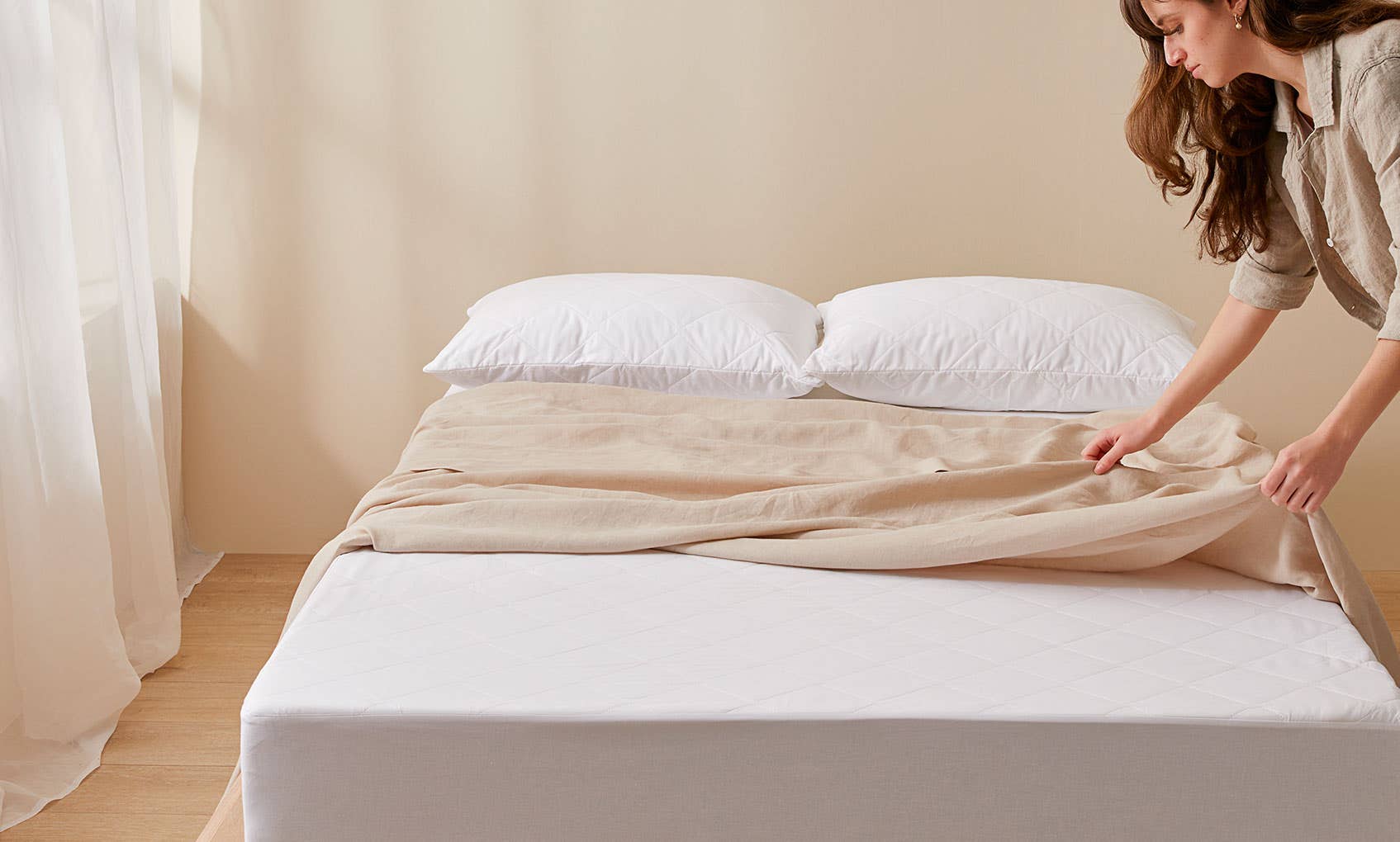Before Using:
We know it’s tempting to put new bed linen straight on your bed! However, we recommend giving new sheets, pillowcases, and quilt covers a wash prior to first use. This will soften, freshen, and air the fibres so that they can perform at their best.
Before Washing:
It’s so important to remember that fabrics and compositions vary significantly between products, and they don’t all like being treated the same.
To extend the life of your items and keep them looking and feeling wonderful, make sure you check the care guidelines before washing or drying. The easiest way to do this is to read the care label on your product, showing instructions for how best to wash, dry, and maintain your bed linen.
Care tips:
It is always best to wash your bed linen, towels, and clothes separately. This will prevent cross linting or colour running from your favourite dark denim jeans on to your new white sheets. It also helps avoid any potential tears or pulling caused by items that might catch (zips, buttons, studs, etc.)
Line-dry your bed linen in the shade and avoid tumble drying where possible. Tumble drying, particularly on a hot setting, can cause shrinkage to natural fibres and wrinkling. If necessary, tumble dry on a low-heat setting. Removing your sheets and quilt covers from the dryer while still slightly damp and finishing them off with a line dry can help prevent wrinkles.
Things to look out for:
We test all fabrics for colour fastness to the highest of standards, however certain products should be avoided when caring for your bed linen.
Fabric softeners should not be used on bed linen and towels. The chemicals used in these products coat the fibres, causing them to be less absorbent and less hard wearing.
Optical whiteners and products containing bleach can also strip the colour from your bed linen.
Some skin-care products can react similarly to bleach, causing discolouration and fading which can be evident in patches on pillowcases and along the top edge of your sheet. If this is a concern, white bed sheets may be the best option for you.
Pilling is caused by the matting of fibres loosened during wear, forming small balls that sit on the surface of the fabric. We test our fabrics for pilling to the highest of standards, however, pilling can occur with some fabrics that have more open fibres like flannelette. To avoid or reduce fabric pilling, we suggest wearing natural fibres to bed.
Still unsure?
For tips on finding the best sheet set for you, view our buying guide to explore our range and discover the benefits of each fabric.
When it comes to selecting or caring for your bed linen, it’s always best to ask! We want you to find the perfect product for you and ensure it delivers quality and comfort for years to come. If our product care label or the guide above hasn’t answered your questions, either head in store or contact one of our customer service representatives for further assistance. If in doubt, reach out.








